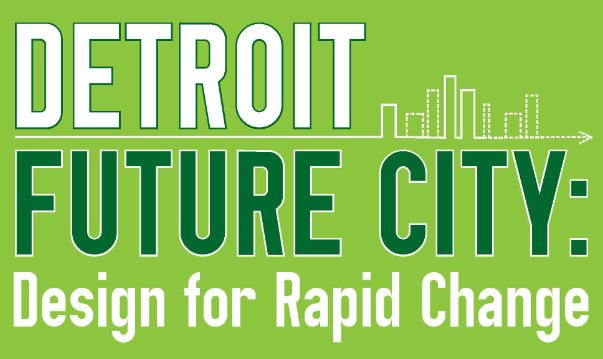Seeing the Tapestry: A Review of "Detroit Future City"
Before I went to the Detroit Future City panel this past month, I always imagined Detroit as a city with life, but mostly as a city with weeds piercing the sidewalks, crumbling vacant buildings, and tiny urban vegetable gardens springing up in between. I had heard the cityscape referred to as a “playground for designers,” ripe with opportunities to rebuild and re-launch a city that had dwindled in size but is starting to make a comeback. What I didn’t know was how this comeback was happening, and who was making it happen. The panel at the Frye Art Museum featured two Detroit natives, Rainy Hamilton Jr., President and Principal-in-Charge of Architecture, Hamilton Anderson Associates in Detroit, and Dan Pitera, Associate Professor of Architecture at the University of Detroit Mercy and Director of the Detroit Collaborative Design Center. The other panelist was Eric Becker, a filmmaker from Seattle that presented a film about a three-day tour in Detroit. Eric’s film represented what I think many of us who have not visited The Motor City would have imagined the Detroit to look and feel like: spooky neighborhoods of beautiful old architecture, a cool retro theater turned into a parking garage, and young artists bringing spirit into the community. After Eric spoke, Rainy and Dan acknowledged this romantic view of Detroit, but shed light on its gritty, more challenging side. Dan described the city as a tapestry—one side beautiful and colorful, the other side…not so attractive. What Detroit struggles with and what keeps its inhabitants awake at night is complicated and complex. Not only do they have racial and economic imbalance, they have street lights with out bulbs, homes without water, and a population of people that are tired and defeated. They have vacant homes that catch fire and ambulances that can take up to 45 minutes to arrive to an emergency. The only way to start fixing all of those problems is to listen to them. All of them. Dan spoke of how he set up cardboard tables in the street to simply listen to the city’s residents. He advocated that it is only after you understand the city’s people that you can understand the city. And that is the same mindset of Detroit Future City: Detroit’s Strategic Framework Plan. You can see it here. It is a remarkable, in-depth guide for healing the city of Detroit, and looking into rebuilding for the future. It focuses on the health and well-being of the current residents, and stresses the necessity of capitalizing on the assets that the city has now—open space and vacant lands—and giving those places back to the community as a resource. It calls for stewardship and fostering important community relationships, with a focus on small populations. The amazing advantage that Detroit has is that it is nearly untouched by gentrification, and it is brimming with character, history, and bone fide authenticity. Focusing on smaller communities and making them more independent will lead to a population of citizens who have all they need within their reach, who are optimistic and filled with pride. With stronger systems in place, they’ll have intelligent growth and be more prepared for climate change. I think Washington’s cities can learn from Detroit. There’s usually a tangled web of information to sort through and a variety of layers to unveil in any project, but when in doubt it’s always the people that are most important, and that are most necessary for positive change to happen. Without them success is impossible. -Stephanie Stroud
|

